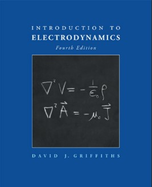Solution Found!
(a) Use the Neumann formula (Eq. 7.23) to calculate the
Chapter 7, Problem 56P(choose chapter or problem)
Problem 56P
(a) Use the Neumann formula (Eq. 7.23) to calculate the mutual inductance of the configuration in Fig. 7.37, assuming a is very small (a ≪ b, a ≪ z). Compare your answer to Prob. 7.22.
(b) For the general case (not assuming a is small), show that
Equation 7.23
Reference prob 7.22
p>A small loop of wire (radius a) is held a distance z above the center of a large loop (radius b), as shown in Fig. 7.37. The planes of the two loops are parallel, and perpendicular to the common axis.
(a) Suppose current I flows in the big loop. Find the flux through the little loop. (The little loop is so small that you may consider the field of the big loop to be essentially constant.)
(b) Suppose current I flows in the little loop. Find the flux through the big loop. (The little loop is so small that you may treat it as a magnetic dipole.)
(c) Find the mutual inductances, and confirm that M12 = M21.
Questions & Answers
QUESTION:
Problem 56P
(a) Use the Neumann formula (Eq. 7.23) to calculate the mutual inductance of the configuration in Fig. 7.37, assuming a is very small (a ≪ b, a ≪ z). Compare your answer to Prob. 7.22.
(b) For the general case (not assuming a is small), show that
Equation 7.23
Reference prob 7.22
p>A small loop of wire (radius a) is held a distance z above the center of a large loop (radius b), as shown in Fig. 7.37. The planes of the two loops are parallel, and perpendicular to the common axis.
(a) Suppose current I flows in the big loop. Find the flux through the little loop. (The little loop is so small that you may consider the field of the big loop to be essentially constant.)
(b) Suppose current I flows in the little loop. Find the flux through the big loop. (The little loop is so small that you may treat it as a magnetic dipole.)
(c) Find the mutual inductances, and confirm that M12 = M21.
ANSWER:
Solution 56P
Step 1 of 4:
Consider two loop of wires having turns and as shown below.
